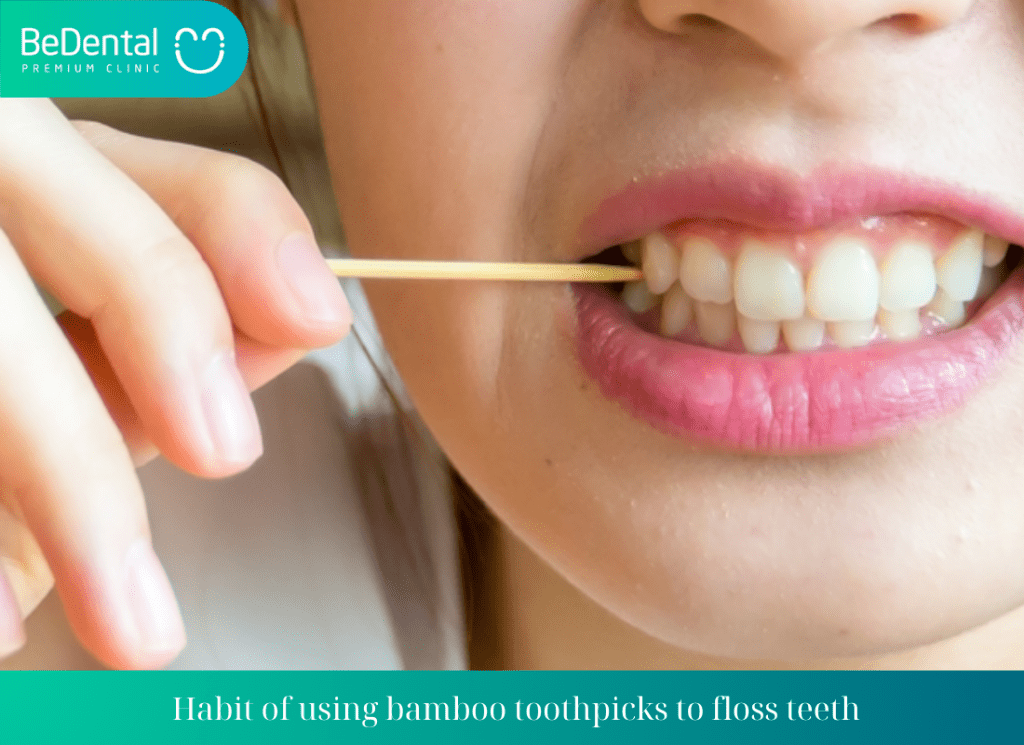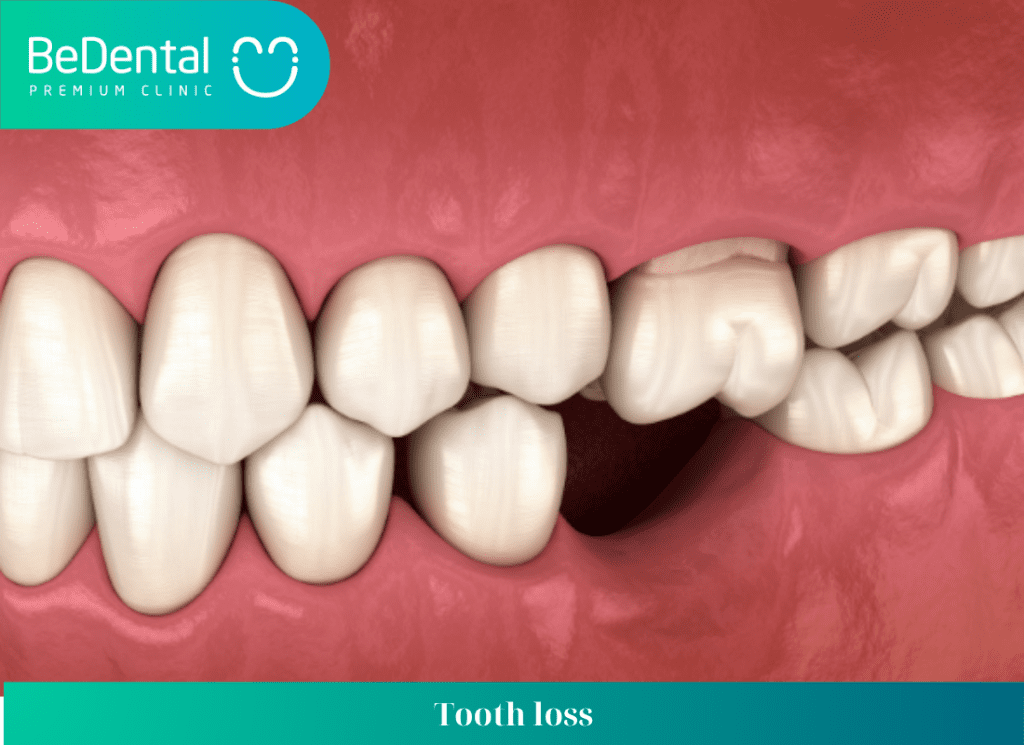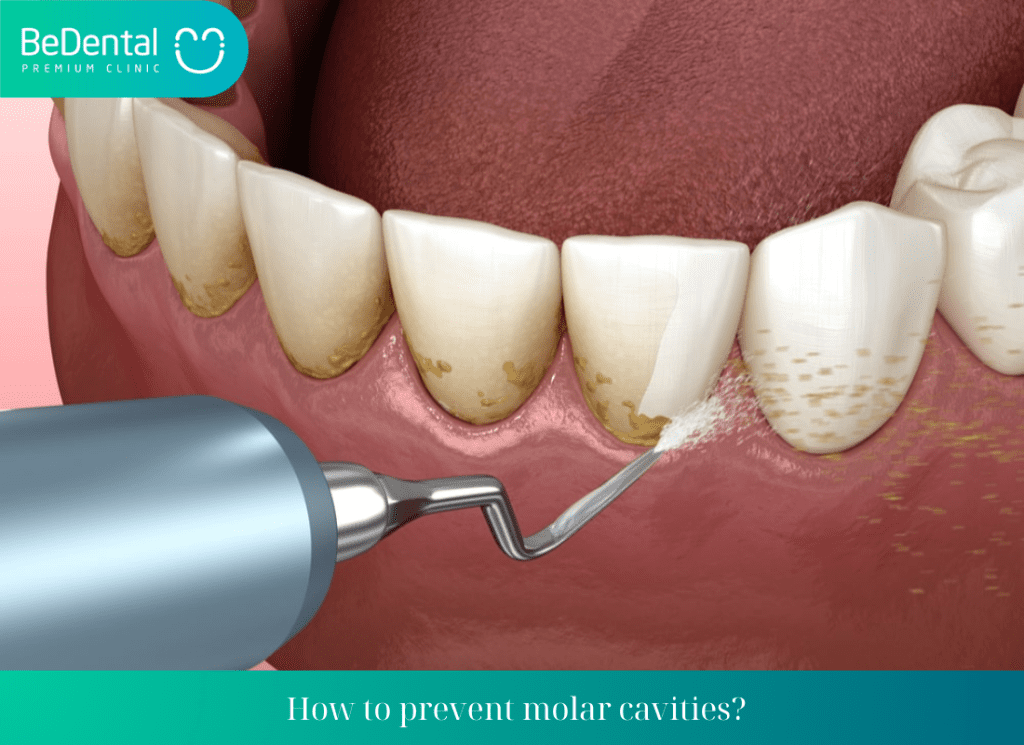Cavities Between 2 Molars (Interdental Caries) and Effective Treatment Methods. Cavities between two molars are a fairly common phenomenon. However, treating molar cavities is not as simple as other cavities. If you are experiencing molar cavities and feel extremely uncomfortable by the symptoms it brings, don’t miss BeDental’s article below.
We will help you have a more general overview of molar cavities and the fastest and most effective treatment plan.
What is interdental caries?
What is interdental caries? Cavities between two molars are also known as interdental caries or molar caries. This is a condition where tooth decay attacks the spaces between two adjacent teeth. Tooth decay damages the outer layer of enamel and deepens over time to weaken the tooth structure.

The longer the intervention is delayed, the more tooth decay will spread and can penetrate deep into the pulp, making it more difficult to completely cure.
Interstitial tooth decay is very common because these are places where food is easy to trap but difficult to clean. Besides, this location is quite hidden and has many bacteria residing. Detecting cavities between molars is also quite difficult because this location is relatively hidden. Most patients only discover when the decay has eaten quickly and spread, causing damage to both adjacent teeth.
See more: Can Cavities Be Braced? How to prevent cavities during orthodontic treatment?
Stages of development of molar interdental caries
Cavities between two molars often progress quite slowly and in stages. You need to determine what stage tooth decay is in to have the most appropriate treatment plan. Below are the mild to severe stages of tooth decay between 2 molars:
- Enamel decay: This is the first stage of tooth decay. Usually with enamel decay, the dentist will have a treatment regimen that is simple, easy and does not recur. Signs of enamel decay are often yellow or brown streaks in between teeth and tooth edges.

- Brown dentin worm: At a later stage, when the disease has developed rapidly, the worm has reached brown dentin. With the naked eye, you can distinguish cavities between molars from tiny holes in the teeth.
- Besides, you may experience more obvious pain and sensitivity. However, the pain does not come often, but will come in waves, accompanied by a sharp feeling, significantly affecting daily eating, especially with hot or too cold spicy foods.
- Deep dentin caries: This is the most severe stage of interdental caries. At this time, the enamel layer has been completely destroyed and the dentin layer inside can be seen. If the disease has progressed to deep dentin, the patient will feel extremely uncomfortable.
Along with that, pain and sensitivity will come more often even when you don’t eat or drink anything. More seriously, some cases of deep dentinitis have progressed to other healthy teeth.
See more: Treatment methods for swollen gums caused by cavities
Causes of interdental caries
What are some Causes of interdental caries? To have a suitable and effective treatment plan for cavities between two molars, you need to determine the cause of your disease. Below are some of the leading causes of molar cavities researched and verified by experts:
Dental care is substandard
The main cause of tooth decay in general and cavities between two teeth in general is the oral hygiene process. It can be said that oral hygiene determines up to 90% of whether teeth are healthy or not.
Oral hygiene here includes many different tasks, not just brushing your teeth every day. You should maintain the habit of brushing teeth regularly and combine scaling, rinsing with antiseptic solution, using water floss, dental floss, etc.
If you do not take care of your teeth and ensure thorough cleanliness, leftover food will get stuck in between your teeth and cause cavities. Initially, cavities are just small spots, but over time, bacteria grow and damage the enamel between teeth, making the treatment process even more difficult.
See more: Causes of bitter taste in mouth
Daily diet
Eating habits with lots of sweets, carbonated drinks, colorants, etc. are all factors that cause cavities between molars. These are all foods that contain ingredients that are not good for oral health.
In addition, food particles and chemicals in the food groups mentioned above are often easily trapped on teeth to create favorable conditions for bacteria to penetrate and develop disease. Not only tooth decay, but many other oral diseases such as periodontitis, gingivitis, etc.
Habit of using bamboo toothpicks to floss teeth

For a long time, bamboo toothpicks have always been popular to remove leftover food stuck between teeth. However, using toothpicks is not good for oral health if used long term. Because bamboo toothpicks are hard, using them too often will create gaps between teeth. Food can therefore easily be tied up, creating a favorable environment for bacteria to grow and cause disease.
Do not treat other oral diseases thoroughly
Some other oral diseases such as gingivitis, periodontitis, bad breath, etc., if not completely treated, pose a potential risk of tooth decay. Because bacteria still reside here, when met with the right conditions, they will attack between teeth and cause disease quickly.
Some other reasons
In addition to the above reasons, cavities between two molars also appear from the overuse of antibiotics and painkillers. Besides, people with diabetes, immune system deficiencies, etc. will also experience more tooth decay than people with normal health.
Typical symptoms of molar interdental caries
Tooth decay progresses silently and is difficult to detect early. Not to mention the condition of cavities between molars is even more difficult to detect because this location is quite hidden. However, you can still recognize cavities between two molars through the following typical symptoms:
- The first stage of interdental caries is the appearance of opaque white spots.
- After that, small black holes gradually appear on the teeth, accompanied by pain and slight sensitivity because the tooth enamel has been damaged.
- Observing the tooth roots, tooth gaps and tooth edges, there will be black or brown plaque, visible to the naked eye.
- Tooth decay continues to penetrate deep into the dentin, increasing sensitivity and making symptoms more obvious when eating foods that are too hot or too cold, too sour or too sweet.
- When brushing your teeth or suddenly changing climate, you will also feel pain in the area between your molars.
- The edges of the teeth appear many tiny holes and begin to chip.
- The oral cavity may have an unpleasant odor.
When interdental caries gets worse, the pulp chamber can be exposed and cause local inflammation, affecting the chewing ability and longevity of the tooth.
Are interdental caries dangerous?

Is cavities between two molars dangerous? This is the question most patients have when encountering this condition. Depending on the progression of tooth decay and cheek swelling, its level of danger will be different.
Specifically, some serious consequences and complications caused by interdental caries are:
Affects spirit and health
When tooth decay occurs, pain and sensitivity are unavoidable. If the disease becomes severe, the frequency of pain visits will increase, especially at night. This has a significant impact on the patient’s spirit and psychology. When you wake up the next morning, you will not be able to maintain a comfortable and alert spirit to work.
Besides, toothache also causes you to have many difficulties in eating and drinking. Anorexia and fear of eating will prevent the body from getting enough nutrients. This will affect overall health, the immune system will not be good and create conditions for other diseases to develop.
See more: 5 causes of porcelain tooth sensitivity?
Risk of tooth decay in the entire jaw
Initially, the disease may develop in the spaces between the molars. However, if not intervened and treated early, tooth decay can spread throughout the jaw. This has been identified by dentists because tooth decay often spreads faster than regular tooth decay.
Serious loss of aesthetics
When tooth decay occurs, black and brown patches will appear in the gaps between teeth, making them unsightly. When you laugh and talk, this flaw can be exposed and make you feel self-conscious.
Tooth loss

When cavities develop between two molars and do not receive timely intervention, the disease progresses and can lead to more serious complications such as tooth loss. Usually, when teeth fall out when decay occurs, it is because the damage has spread to the tooth pulp. At this time, the plan to preserve real teeth will not be effective and must be extracted.
Potential risk of outbreaks of many other oral diseases
When there is cavities between molars, there is a risk of many other oral diseases breaking out such as tooth enamel wear, receding gums, gingivitis, pulp death, tooth decay causing sinusitis… The longer it is left, the more complicated the disease will be with consequences. more serious results.
Effective method of handling and treating molar interdental caries
When you have tooth decay, you should not be subjective but immediately go to a reputable dental clinic for examination and treatment. Depending on the level of damage to the teeth, the doctor will recommend the best treatment plan for molar cavities.
See more: HOW MUCH DOES IT COST TO REMOVE WISDOM TEETH? 3 REASONS TO REMOVE YOUR WISDOM TEETH
In mild cases of molar interdental caries
If you have mild tooth decay, you can completely treat it by changing your oral hygiene and daily diet. Besides, you can combine some folk tips on treating tooth decay. Here are the things you need to pay attention to when you have molar interdental caries:
- Clean your teeth daily with fluoride toothpaste.
- Brush your teeth vertically and only use gentle pressure.
- Use dental floss to clean between your teeth before brushing. In addition, you can use a water toothpick, but absolutely do not use a bamboo toothpick to floss your teeth.
- Change your diet to suit a low-sugar menu, don’t drink carbonated soft drinks, etc.
- A good diet when suffering from molar cavities is foods rich in calcium, vitamin D, vitamin K,…
- Folk tips can be applied such as: mint leaf tea or using fresh lemon leaves and ginger to apply to the tooth cavity.

In cases of severe molar interdental caries
When tooth decay has become more severe with serious complications, you need to see a dentist for in-depth examination and treatment. Depending on the level of damage, the doctor will prescribe dental fillings or porcelain crowns to preserve real teeth.
- Dental fillings to treat cavities between two molars: This is a low-cost method of treating cavities. The doctor will suction all the inflammation in the tooth and then use appropriate filling material. Dental filling materials such as composite, fuji,…
- Porcelain crowns to treat cavities between molars: This method is highly appreciated for its durability and aesthetics. The teeth will be sharpened, removing tooth tissue attacked by bacteria and then covered with a ceramic cap. If tooth decay has penetrated into the pulp, root canal treatment is needed before crowning the tooth with porcelain.
- Extracting decayed teeth and planting new teeth: In case the tooth is severely decayed and the pulp is completely dead, you will no longer be able to preserve the real tooth and will need to have the decayed tooth removed.
With molar position, tooth replantation is necessary to ensure jaw structure and chewing function. It is best to choose dental implants to avoid jaw bone loss later.
How to prevent molar cavities?
How to prevent molar cavities? To prevent molar interdental caries, pay attention to the following issues:
- Pay attention to oral hygiene every day with proper brushing, using dental floss, using toothpaste containing fluoride, using oral antiseptic solution, etc.
- Reasonable nutrition with a menu that minimizes sweet foods, lots of starch, etc. It is best to eat lots of green vegetables to supplement vitamins and minerals.
- Drink plenty of water every day to eliminate bacteria and inhibit them from multiplying and growing.
- Regular dental check-ups every 3 – 6 months to remove tartar and control the disease.

Hopefully the useful information in the above article has helped you know how to treat interdental caries and how to prevent cavities from developing. For comprehensive oral health care, you should go to reputable dental clinics like BeDental for examination and advice on appropriate regimens.
See more: What should I eat after wisdom tooth extraction? What to abstain from?
Tư vấn chuyên môn bài viết:
BÁC SĨ DƯƠNG THỊ THÙY NGA
Bác sĩ chỉnh nha tổng hợp
Ngôn ngữ giao tiếp: Tiếng Việt, Tiếng Anh, Tiếng Nga
Đặt Lịch Hẹn
Xem Hồ Sơ
Tư vấn chuyên môn bài viết:
BÁC SĨ DƯƠNG THỊ THÙY NGA
BEDENTAL - TOP STANDARD DENTISTRY SYSTEM
In HANOI
Address 1: 7B Thi Sach St, Ngo Thi Nham, Hai Ba Trung Dist, Ha Noi. - 0934.61.9090
Address 2: No 129 Hoang Ngan, Yen Hoa, Cau Giay Dist, Ha Noi. - 0934.61.9090
In HO CHI MINH
Address 1: 53 -55 -57 Pho Duc Chinh St, Nguyen Thai Binh, Dist. 1, Ho Chi Minh. - 0766.00.8080
Working: 9am - 8pm everyday
Website: https://bedental.vn/en/





